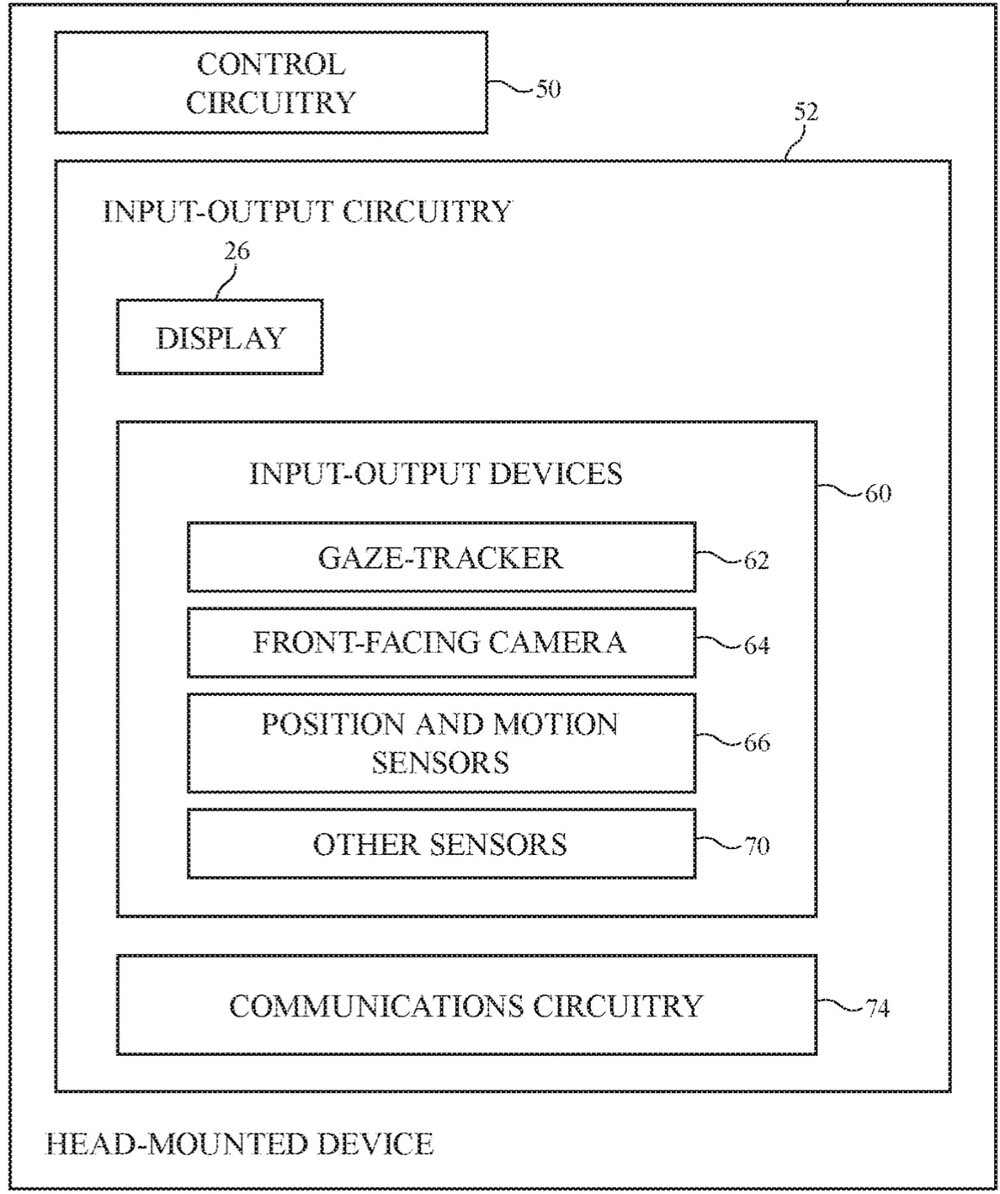Apple has been granted another patent (number 10,642,049) that hints at the rumored “Apple Glasses.” This one is dubbed “head-mounted device with active optical foveation.”
Such a device will arrive this year, next year, 2021, or 2022, depending on which rumor you believe. It may or may not have to be tethered to an iPhone to work. Other rumors say that Apple Glasses could have a custom-build Apple chip and a dedicated operating system dubbed “rOS” for “reality operating system.”

In the newly granted patent, Apple says that often when high-resolution images are being displayed on an electronic device screen for a viewer, it may be “burdensome” to display images at full resolution across an entire display. Apple’s idea is for foveation techniques that involve displaying only critical portions of an image at full resolution and can help reduce the burdens on a display system.
Also, in some cases, images of the environment of the user may be displayed on the display. However, Apple says that, again it may be “burdensome” to use the image sensor to obtain high-resolution images of the user’s entire environment. The company wants to alleviate these issues
Here’s the summary of the patent data: “A pass-through camera in a head-mounted device may capture image data for displaying on a display in the head-mounted device. However, only low-resolution image data may be needed to display low-resolution images in the periphery of the user’s field of view on the display.
“Therefore, the pass-through camera may only capture high-resolution images that correspond to the portion of the user’s field-of-view that is being directly viewed and may capture lower resolution image data that corresponds to the real-world objects in the user’s peripheral vision. To enable the camera module to selectively capture high-resolution images, the pass-through camera may include an image sensor with two or more pixel densities, a distortion lens, and/or one or more planar or curved mirrors. Any of the components in the camera module may be adjusted to change which portion of a scene is captured with high-resolution image data.”
